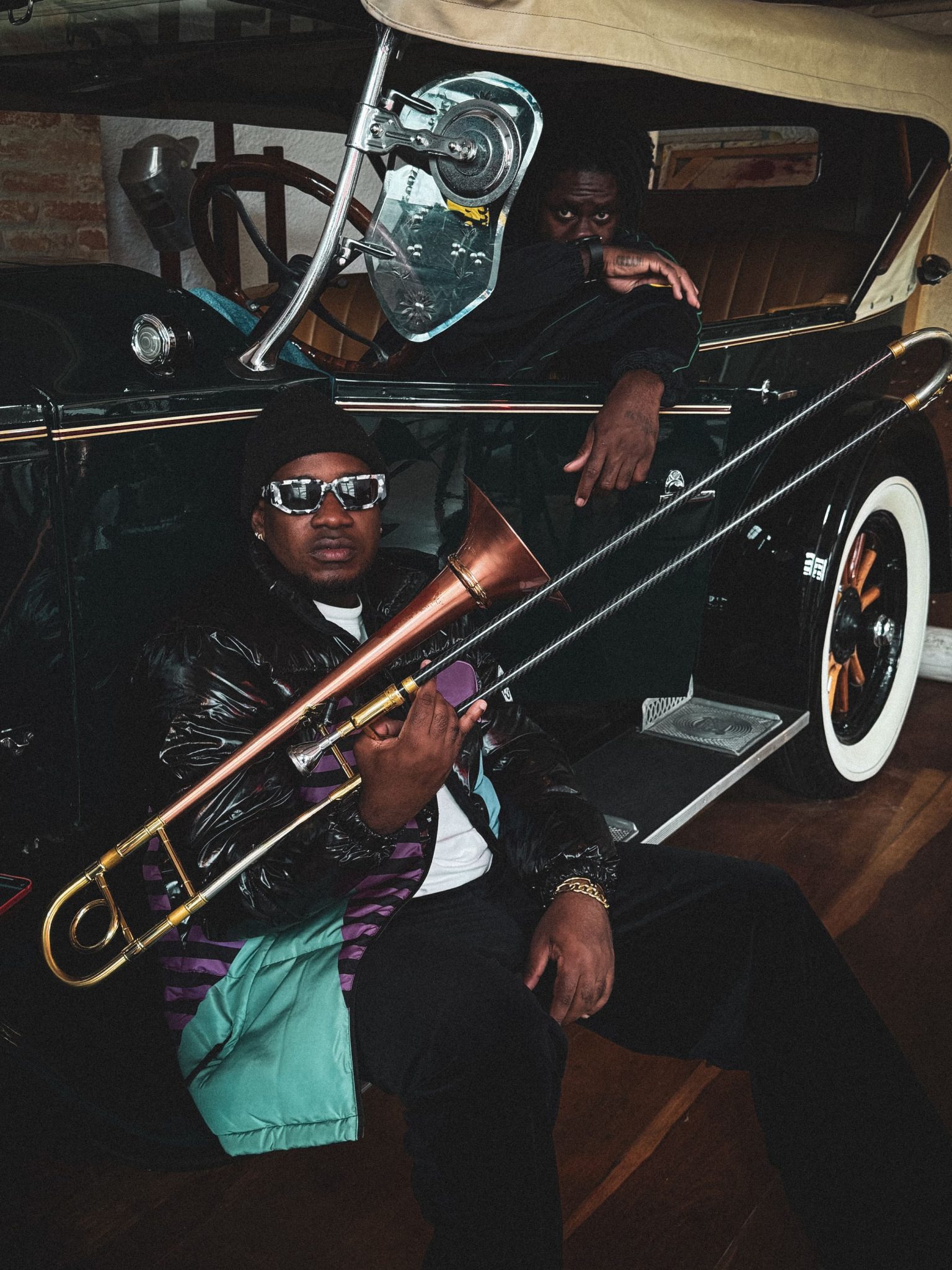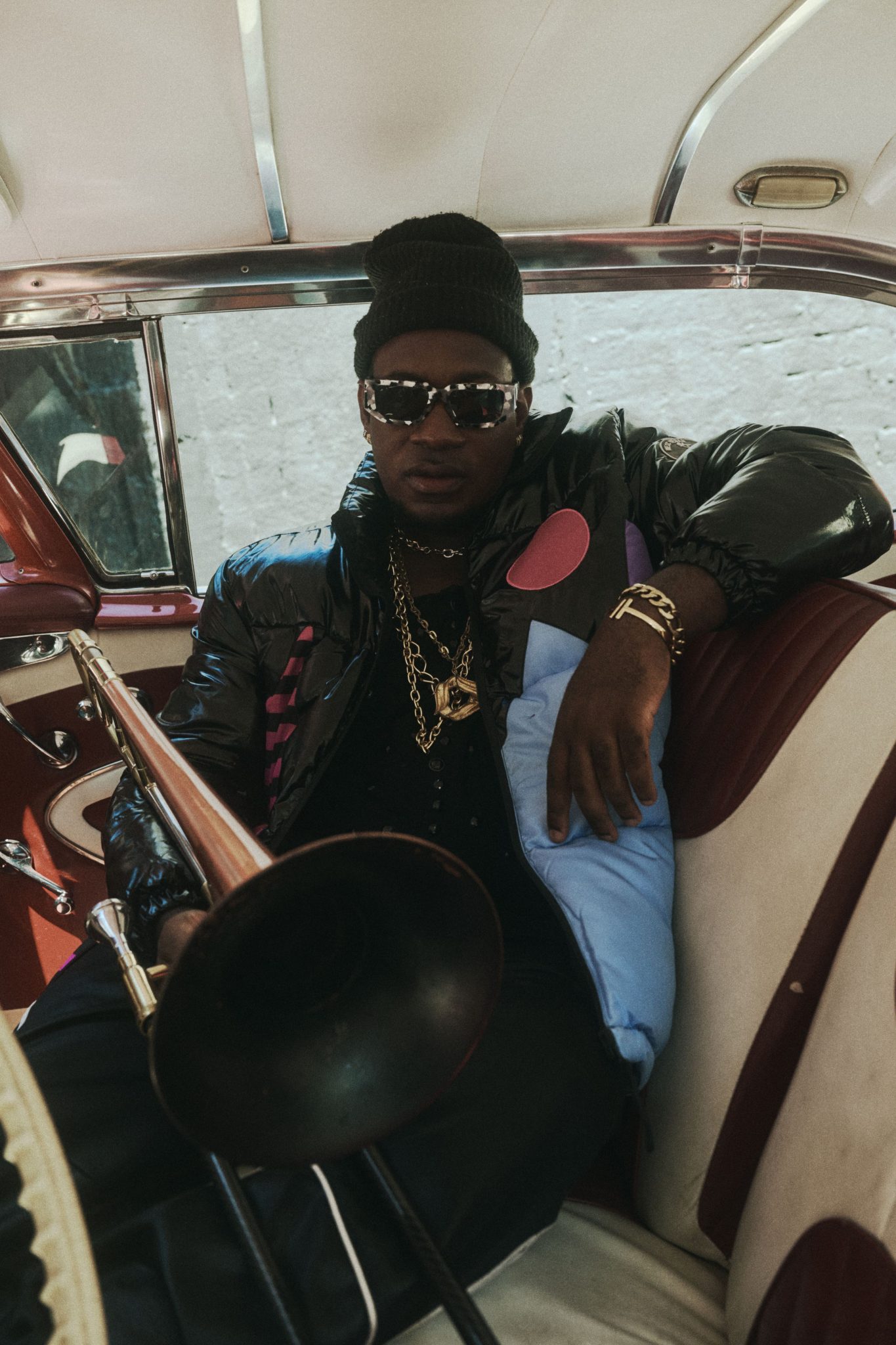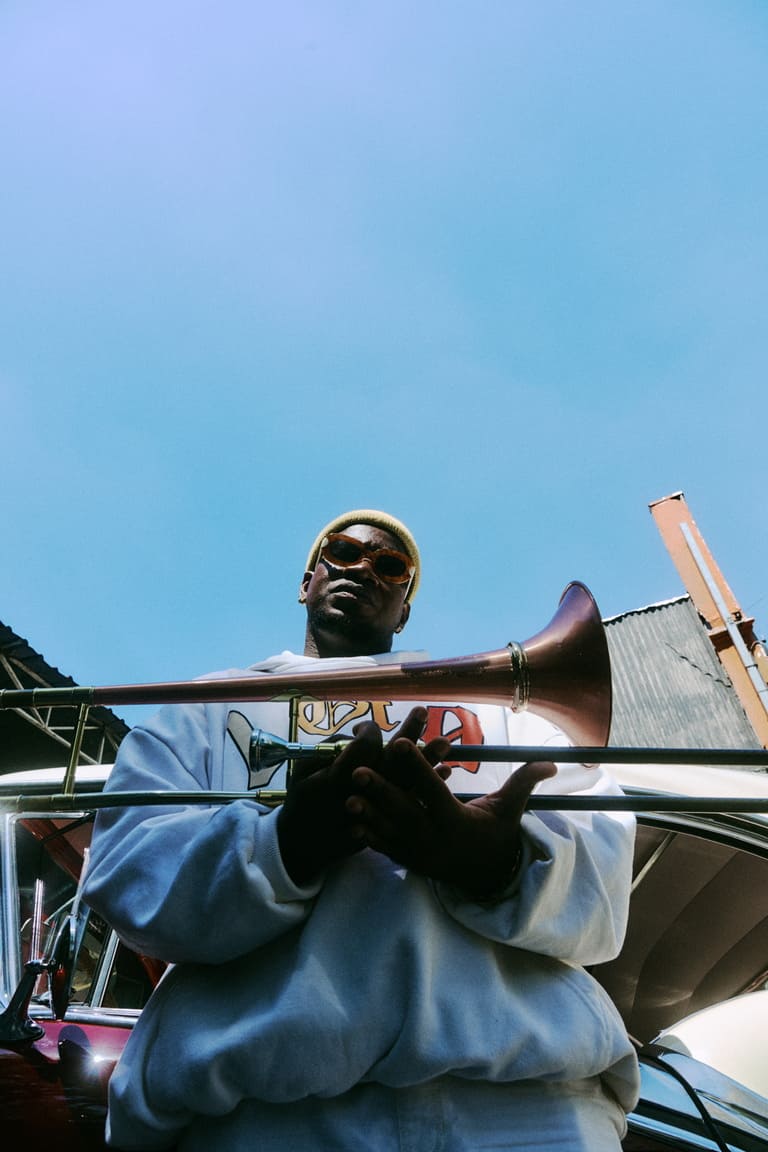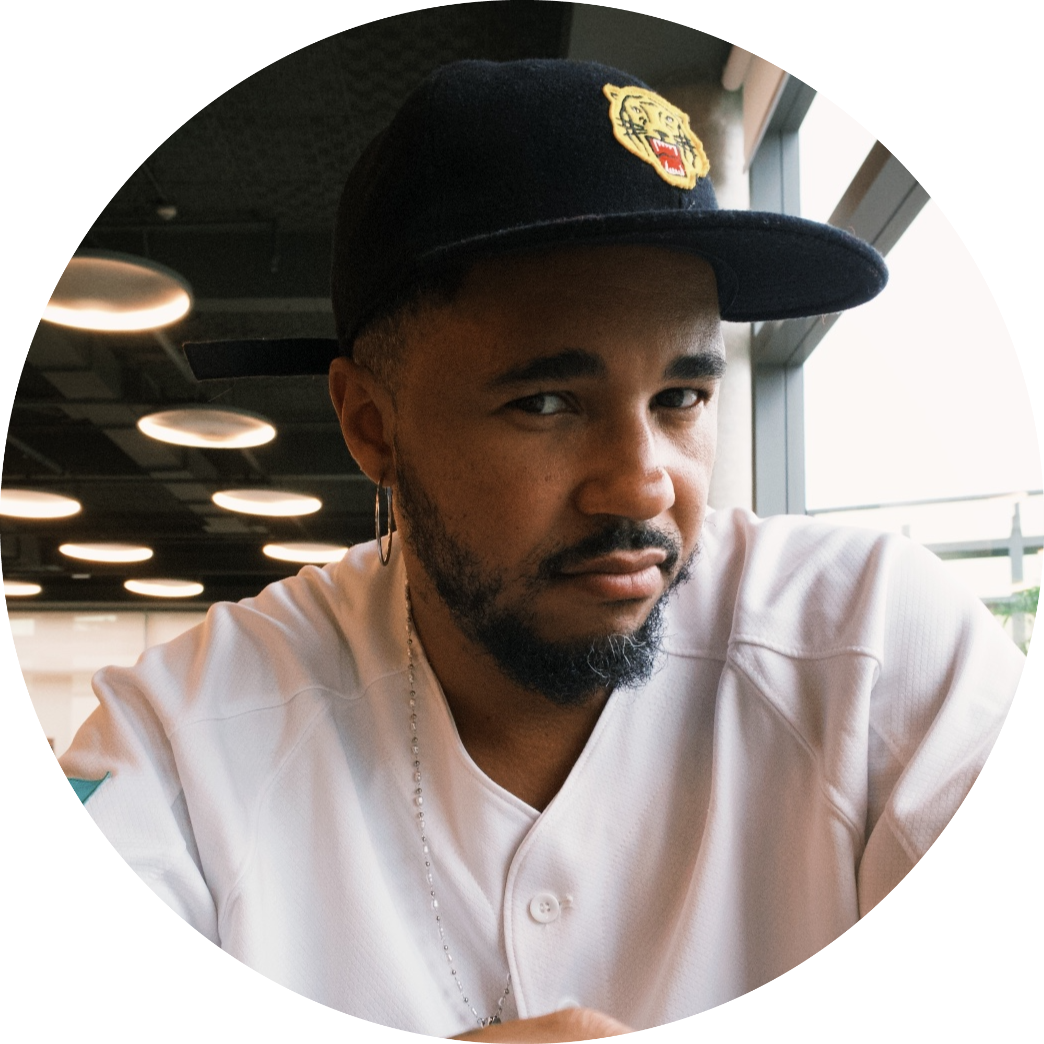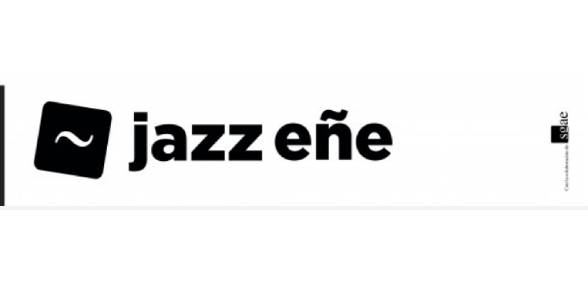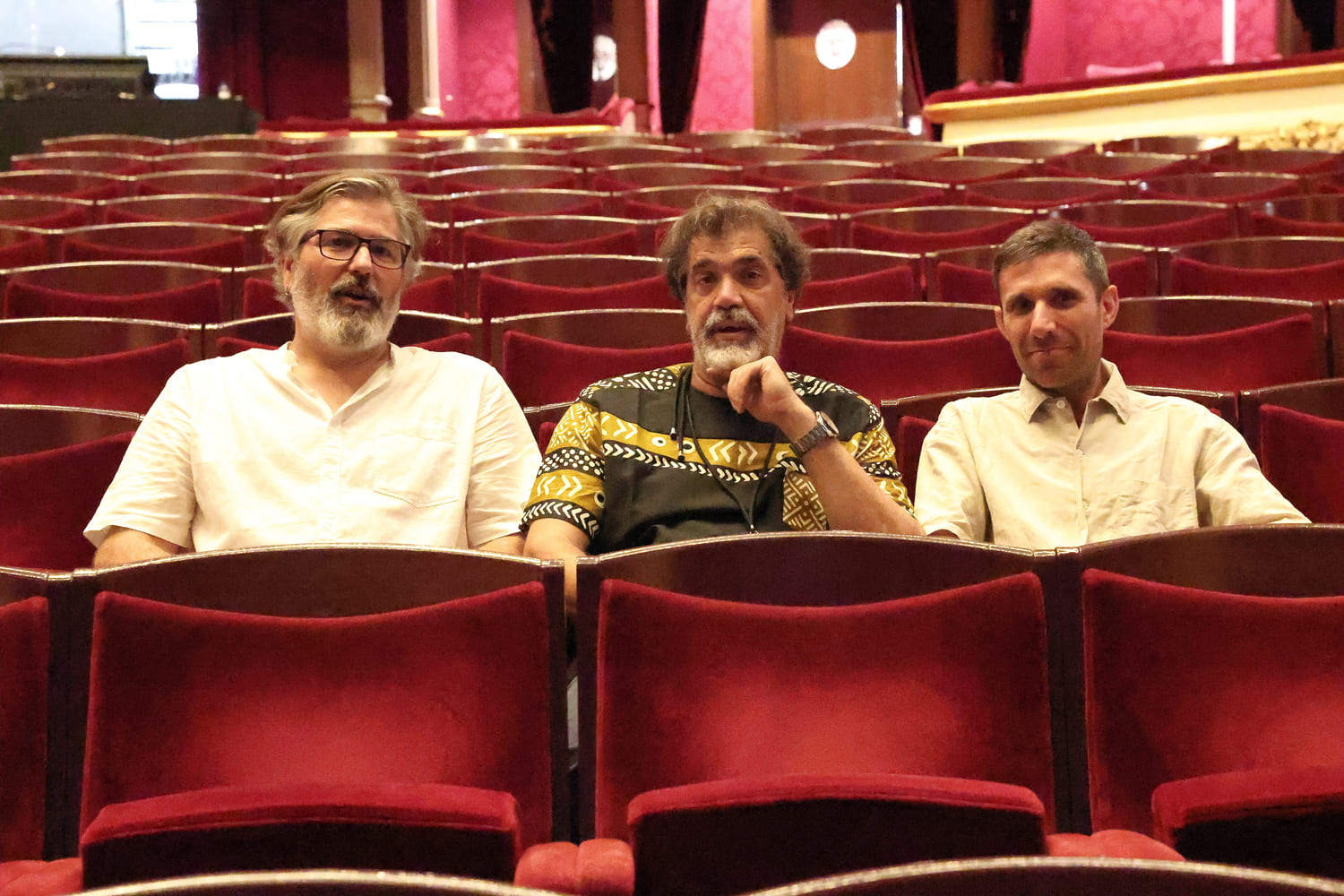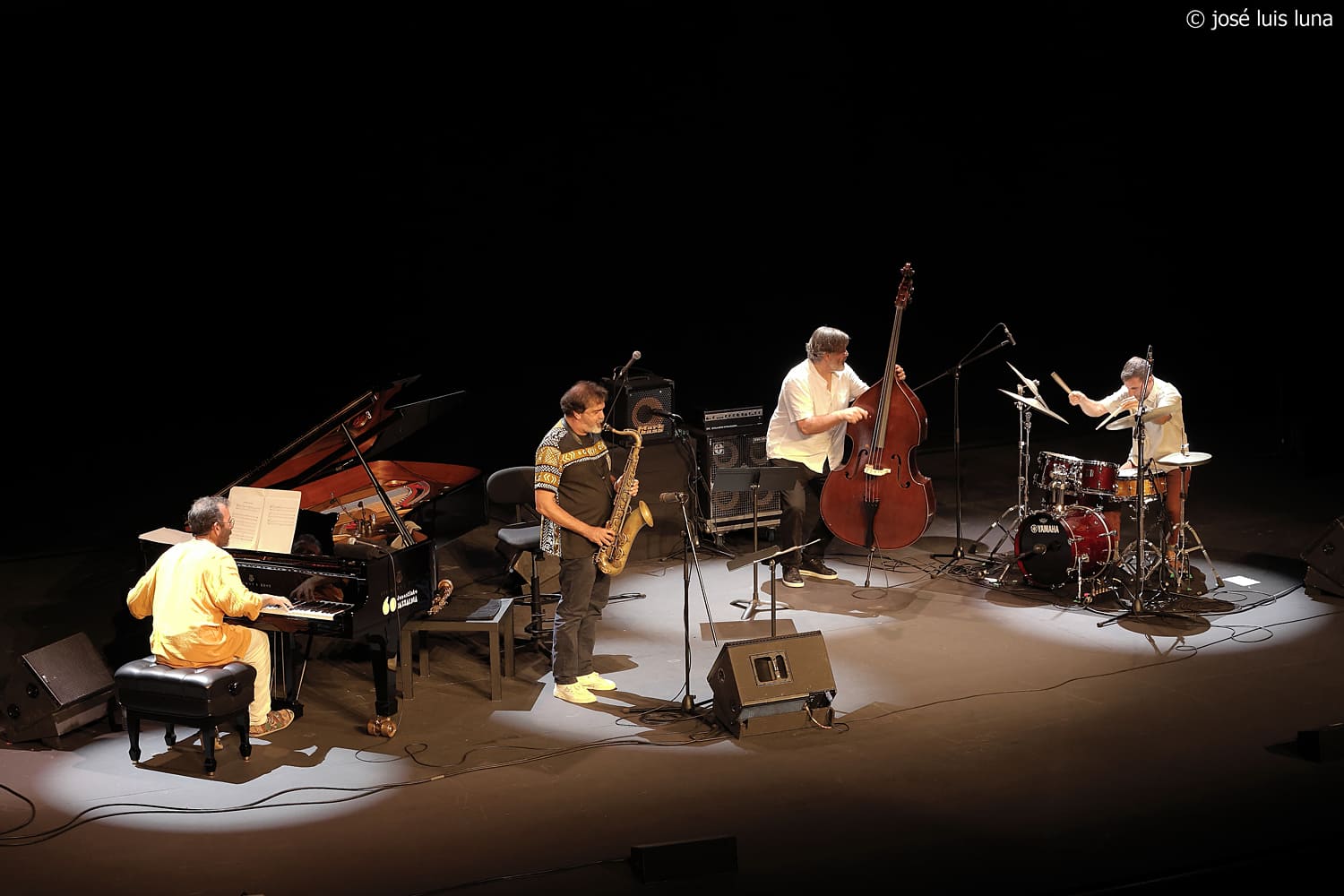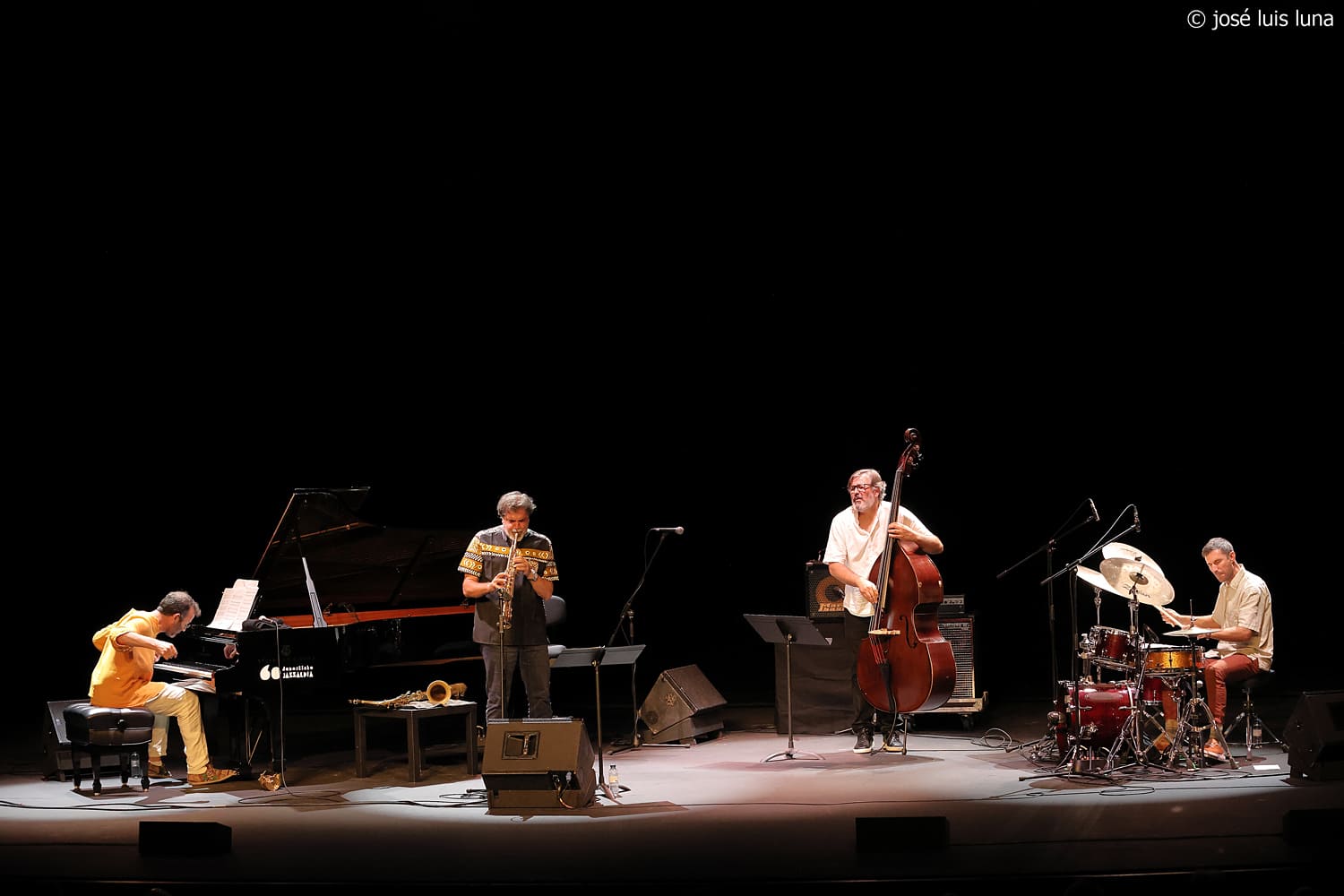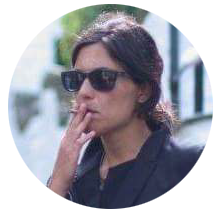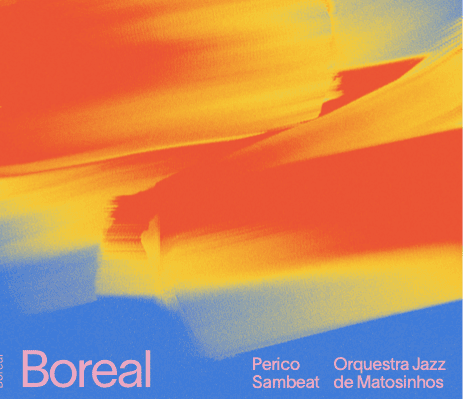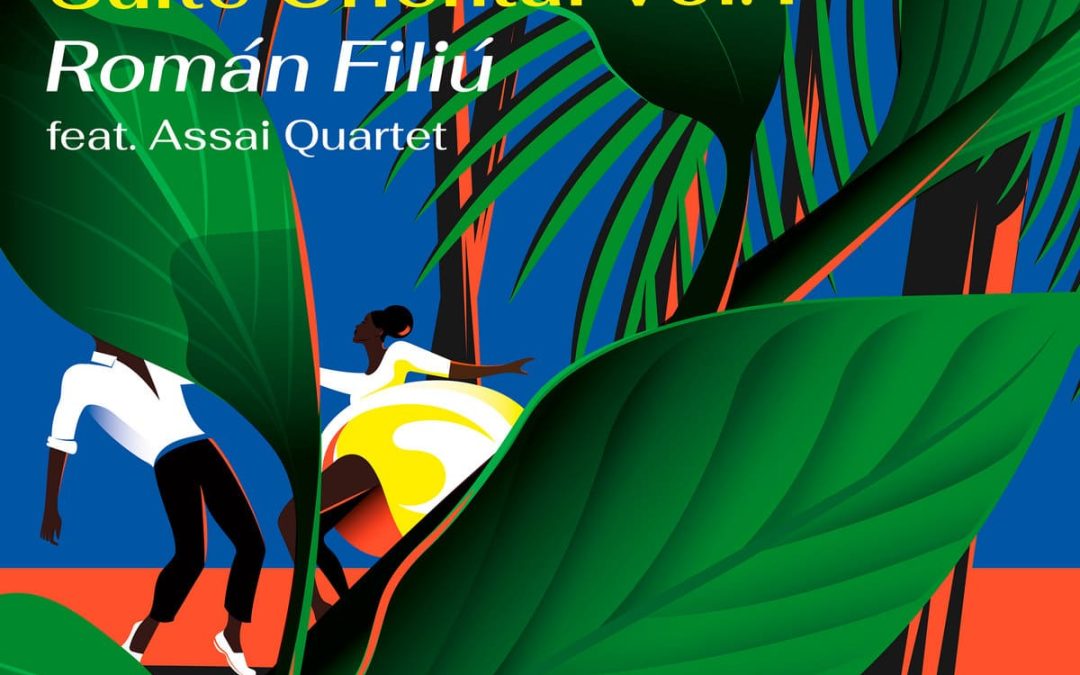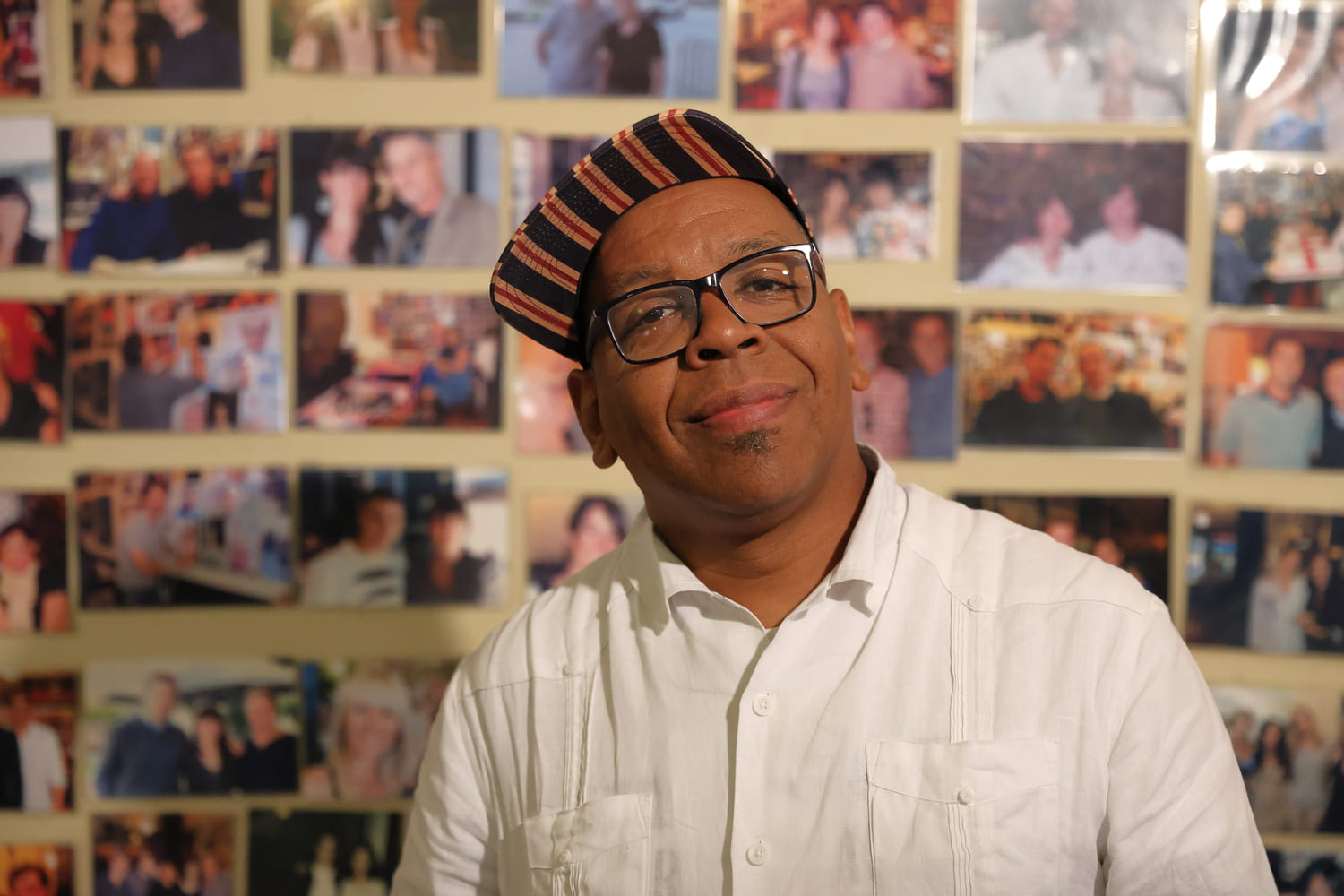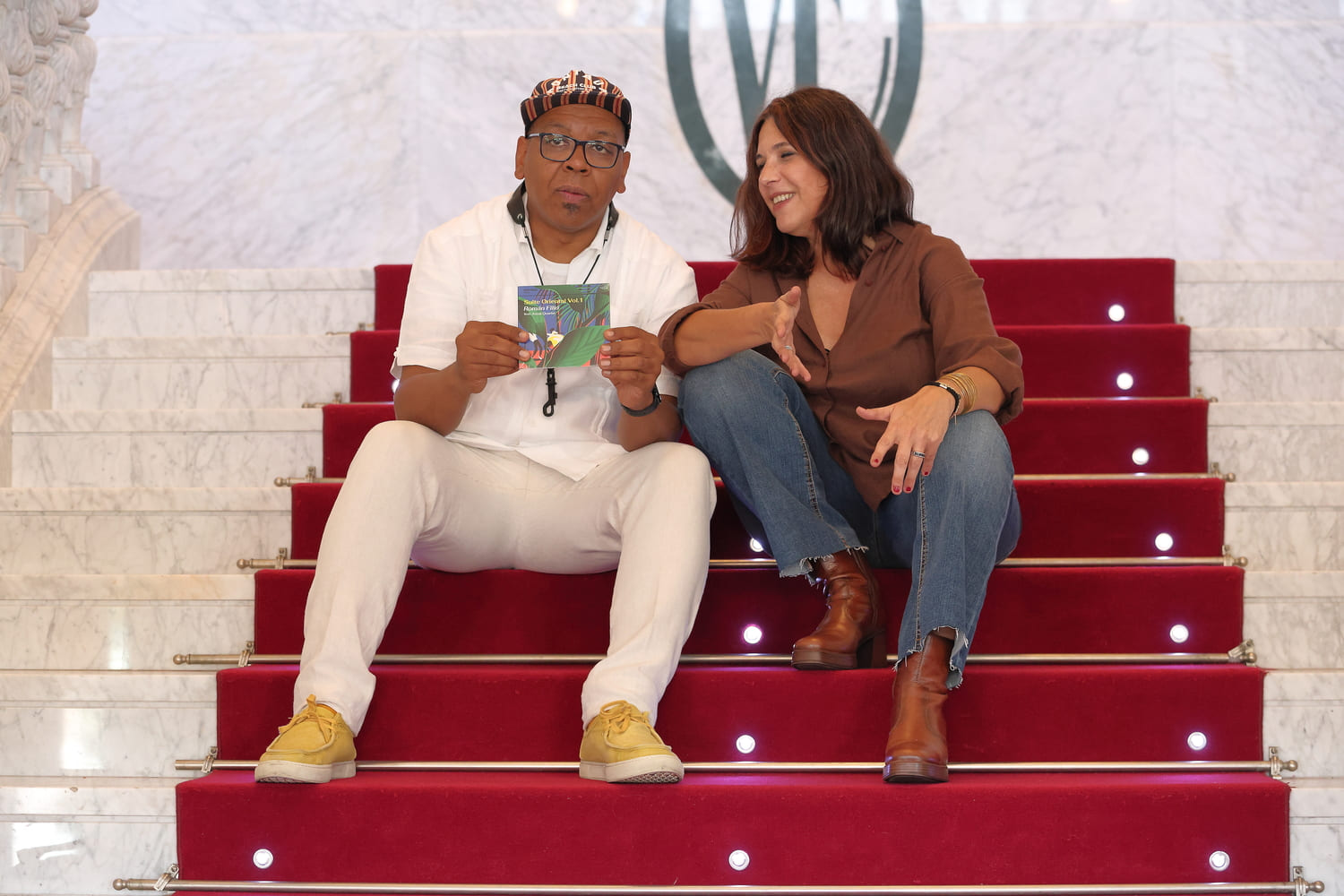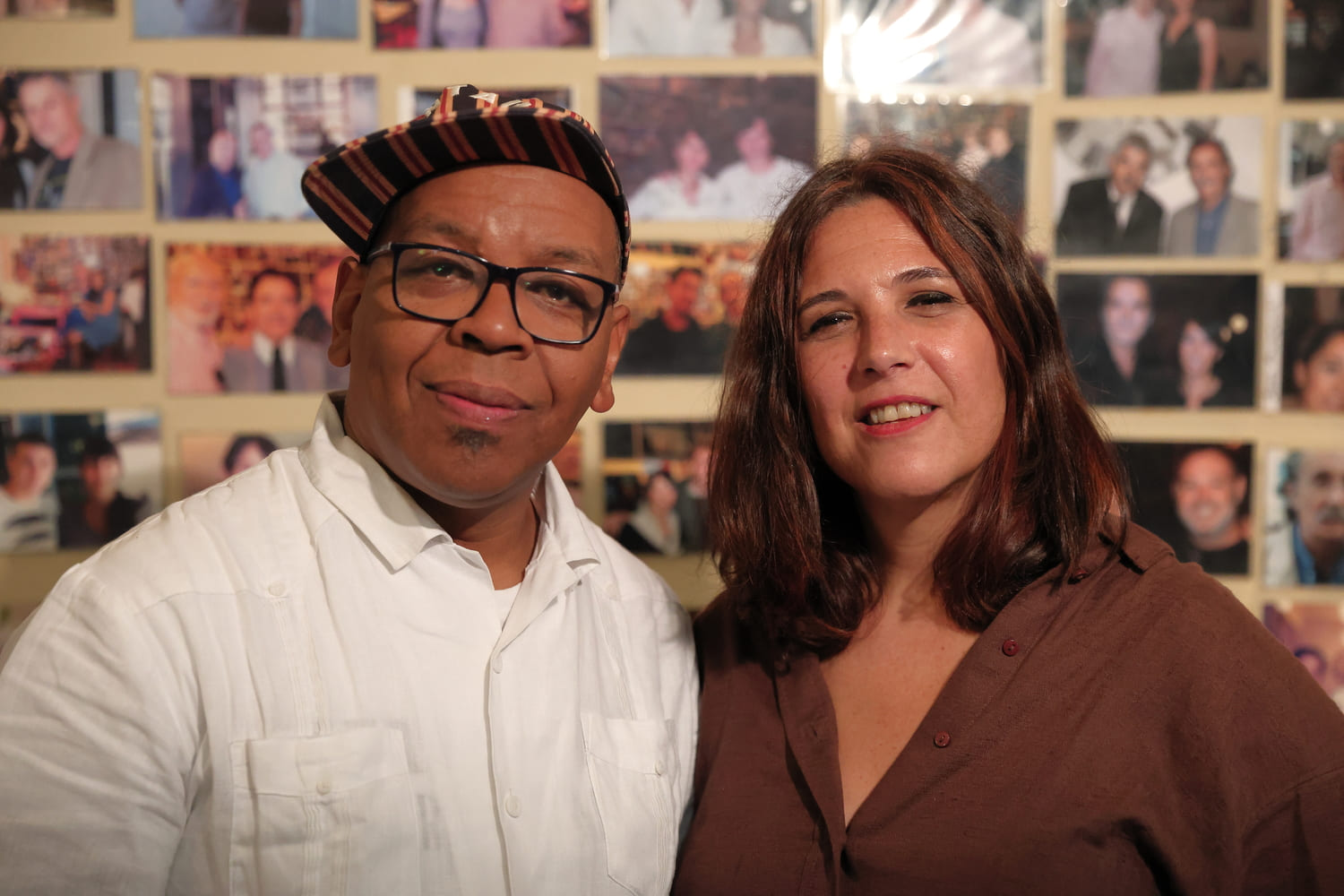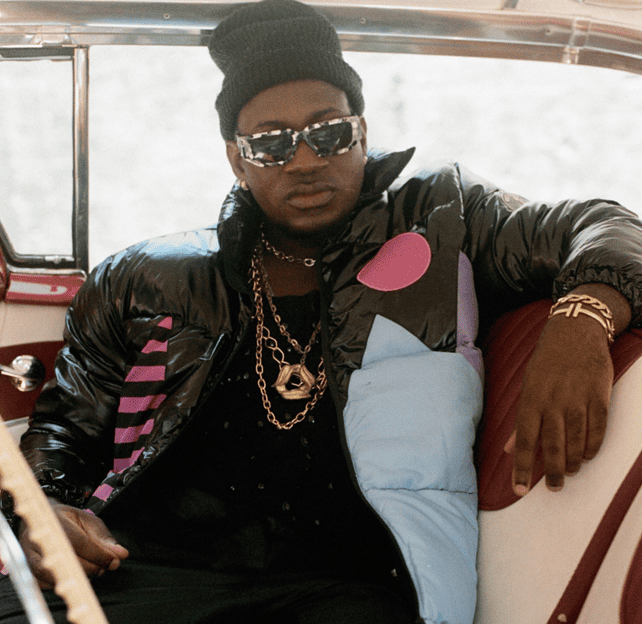
Joabe Reis – Interview
JOABE REIS
Interview
One of Brazil’s most sought-after trombonists, Joabe Reis has played with Macy Gray, Robin Eubanks, Marshall Gilkes, and Ed Motta. On “Drive Slow,” the first single from his upcoming album, scheduled for release in October 2025, he collaborates with American trumpeter Theo Crocker. In July, he embarked on a short European tour, playing at major jazz clubs in London, Madrid, Barcelona, and Paris. This connection with European audiences, who packed his performances, further expanded his understanding of the reach of his music outside Brazil.
A presence at major Brazilian festivals (The Town, Rock in Rio), which represent jazz within pop music, Joabe also curated the Jazz na Serra Festival in Santo Antônio do Pinhal, a small town in the interior of São Paulo state. For the third edition, held from August 21st to 23rd, the trombonist and producer selected acts who are also representing his country around the world, such as Hamilton de Holanda and Trio Corrente. In this conversation, held via Zoom, Reis talks about this role, which he also plays in the Dejavu Session project, the European shows, the next album and jazz.
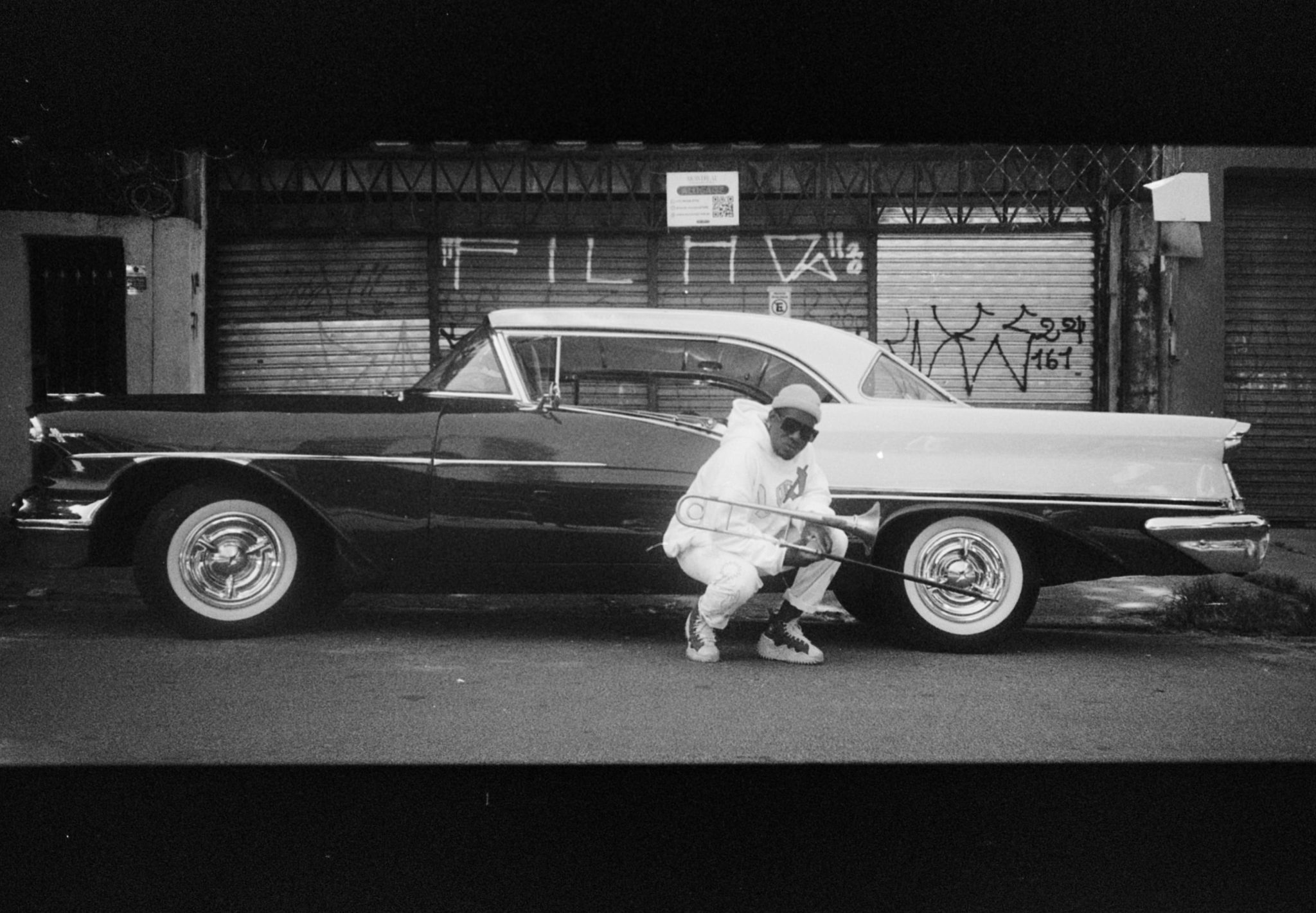
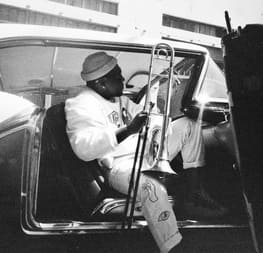
In&OutJazz: Tell me about the experience you had on this short European tour, passing through England, Spain and France.
Joabe Reis: Wow, man. It was amazing! In 2024 it was already really cool, but this year, I think the work took on a different dimension, and we got better feedback, especially from the public. A lot of people in Europe are getting to know my sound. So, it’s a nice surprise. It’s different. The biggest surprise was in London, where a lot of people were talking about the albums and that they like listening to me. And that’s not counting the venues… Ronnie Scott was a place that sold out, then the Jamboree in Barcelona, and in Paris, where we had two sold-out sets (La Châtaigneraie and 38Riv Jazz Club). It was very gratifying.
But weren’t you expecting this repercussion?
My songs have been played abroad. I also receive a lot of messages from people. But I was already in London when, two days before the performance, I received the news that the tickets were sold out. I didn’t imagine it would sell out at the first show. The others followed the same pattern. I think the show that had a smaller audience, with a half-full house, was the one in Madrid. But Madrid has always been very difficult. This is my second time playing there, and I had that impression. And talking to the local musicians, we were convinced. But I understand that my ( Brazilian ) jazz is reaching Europe positively. I believe the trend is only going to grow.
On the single “Drive Slow, ” you invited Theo Crocker to participate. How did this connection with an artist who follows a very similar path to yours, which is to combine jazz with elements of rap and hip hop, come about?
Well, Theo has been very well spoken of internationally, but especially in his home country (the United States). He has been filling a space left by Roy Hargrove since his passing (in 2018), and at the same time, other prominent trumpeters who play this fusion wave, more of jazz, and mixed with hip-hop, more modern, which is what Christian Scott was doing… there was a strategic change in the direction of Christian’s career in recent years, which led him to change his name (to Chief Xian aTunde Adjuah ) and even his show has changed too. So, there was a gap left by Christian Scott in the last four or five years … not a gap, because He’s still active, but this change in career direction has left him in the modern jazz trumpeter’s shoes. In my view, no trumpeter has embraced the same position as Scott and Roy. Theo Crocker is a promising artist in this global space, and I see him gaining enormous prominence and playing festivals all over the world. Having him on my next album, starting with this first single, is incredibly important.
Besides him, you also bring Zudizilla , who brings this rap cadence. Since you’ve already done this with Kivitz and Síntese, I wanted to know if this new album will have this connection between jazz and hip-hop as a central aesthetic?
Yes. It will feature two other rappers, including Zudizilla , as well as two female singers and songwriters. This album will have 11 tracks, five of which will feature MCs and singers. On my first album, “Crew In Church” (2020), I featured rapper Kivitz , and then came singles with Síntese, “I Just Wanna Breathe”, singer Paula Lima, “Homem Pássaro”, and a few other artists. My music has always had a connection to this vocal universe, right? Going along with it has always been a very important combination for me to communicate with other audiences, bringing instrumental music to connect with others who, in a way, aren’t used to listening to an entire instrumental album. So, my strategic connection, besides being musically important, also has the goal of reaching audiences from other places to discover my sound. “Drive Slow ” is a 50/50 song because it starts completely instrumental and has a rap moment where we distance ourselves, the trombone leaves the scene, and then returns with improvisation. This is something I really enjoy exploring.
You’ve also managed to break out of the bubble and represent jazz at major Brazilian festivals like Rock in Rio and The Town… and back in Europe, jazz in England, especially London, is very strong and gaining worldwide recognition. We’re talking about Crocker Scott, and London jazz musicians are taking this approach of combining jazz with rap, with a more street-oriented feel. Have you noticed that too?
I love everything music-related in England, not just London. Several artists I’ve followed from there for a long time, perhaps speaking of instrumental music, the biggest highlight right now is Yussef Dayes , whom I had the joy of meeting in person in New York two years ago… he’s a super generous person, and his music has also reached very important spaces. And England has always had this power to export music, both pop and instrumental. London has always had this power to export music in general. And really playing at the main jazz venue there, which was Ronnie Scott’s, sold out, and having so many important people there in the audience, like Lianne La Havas, a dear, was a very special achievement for me. I’d even say they’re completely different places, but I’ve played at very important festivals, like Rock in Rio, but really the biggest thrill I had was going into Ronnie Scott’s to play a show to a packed house, because of the importance of the venue’s history. Simply put, the biggest names in world jazz have played there, all of them. You walk around and there are photos of these names on the walls. There’s one of my ultimate trumpet idol, which I can say is Roy Hargrove . So, getting up on that stage makes you feel like, wow, what now? The first time I performed in London, it was two shows in much smaller venues, and coming back the second time with this strength was really cool. I believe that in the coming years we’ll increasingly increase this presence because I’ve been preparing this album for almost a year, which will have many good surprises. I’m allowing myself to go into this more contemporary side, bringing a lot of electronics, timbres, synths … a lot of crazy things to this jazz scene. Speaking of Brazilian music, it’s something that not all instrumental artists have dared to do these combinations. I also understand that sometimes we don’t have the space to test these things. And since I already have a lot going on, with some shows planned in important venues, I have the opportunity to test for large audiences whether certain things work or not. I compose and take them to the streets. I test compositions and arrangements. After all that, I record. At Rock in Rio, I played one of the songs that will be on this album. So, I test things out, change the arrangements, combine things, and then when I get to the right place, I go to the studio to record. It’s a reverse process; I don’t record first and then perform. The song will evolve on the road, so I usually let it evolve.

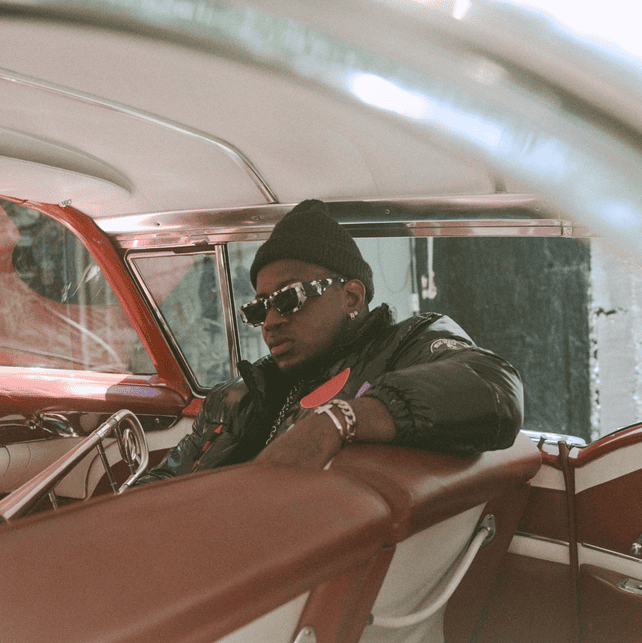
But when she goes to the studio to record, she has already gone through several transformations too…
Yes, many. Usually, I arrive at the studio with the song already knowing exactly where it’s going, what progression I want throughout the song, and who’s a suitable soloist for that track. Only by testing can we understand the best way to reach the audience for that song.
In addition to performing a series of shows and being in the process of producing the album, you are also the curator of Jazz na Serra, a Brazilian jazz festival outside the big city circuit.
First of all, I was delighted when Pedro Pimenta invited me to be a curator. Pedro is very important to Brazilian culture for encouraging so many music projects throughout Brazil and supporting so many important causes, especially instrumental ones. Curating is something I love. I already do it on projects like Dejavu. Sessions , a project I curate as if it were a monthly project, because bringing together 11 musicians, 11 artists, renowned musicians, isn’t a simple process. I have to make it work, make sense. Stopping and considering who the standout musicians are who will be important in the lineup is a huge responsibility. I thought about musicians who have significant work and who connect with each other. So, I invited Hamilton de Holanda, Thiago Espírito Santo, Ellen Oléria, Vanessa Moreno, Salomão Soares and Sintia Piccin, Trio Corrente… Hamilton himself already has a distinguished international career. These are current prominent Brazilian instrumental artists … Grammy winners like Hamilton and Trio Corrente. I think the importance of having these artists in the third edition of Jazz na Serra is a significant validation for the festival. It’s also very important for me to be part of this curatorship because it showcases my curatorial side a little more. I love being in this position because I think it’s important to have jazz festivals in Brazil, and for curators to focus on these artists. To promote instrumental music in places that are off the beaten track. Santo Antônio do Pinhal, in the interior of São Paulo, is a place where, for the local population to see a jazz show of this magnitude, they’ll have to travel to São Paulo or to some festival happening elsewhere in Brazil. So, it also gives the local population access to this type of show, and at the same time, you foster so many positive things for that location. So many people are coming from other places to that city. So, the festival in Serra will certainly be, in a while, in the next few years, I’m sure, an important festival nationally, because those of us who are involved in production and curation at this festival share this concern. It’s a jazz festival where jazz truly takes priority in the musical aspect.
A question I’ve been asking several jazz musicians and jazz enthusiasts. It came up a while back at a discussion panel on the subject, but we couldn’t reach a conclusion. In your view, what is jazz?
That’s a good question … but I think about it a lot. Jazz for me is freedom, because my sound, my original project, is a jazz sound. But it’s not traditional jazz, swing, bebop , or hardbop . Jazz is freedom of expression through creation. For example, my melodies are heavily influenced by funk, neo-soul and hip-hop, but from the moment we move on to improvisation, that’s when I classify my music as jazz. So, this creative freedom of improvisation is also jazz. And the real-time creation of melodies, of compositions—everything that emerges on stage is jazz. So, for me, jazz is creative freedom, melodic freedom, creative freedom in improvisation, creative freedom in composition. So, everything that isn’t, that strays from the agreed-upon, is jazz. Living in an improvised way is also making jazz. So, jazz for me is all of this.

